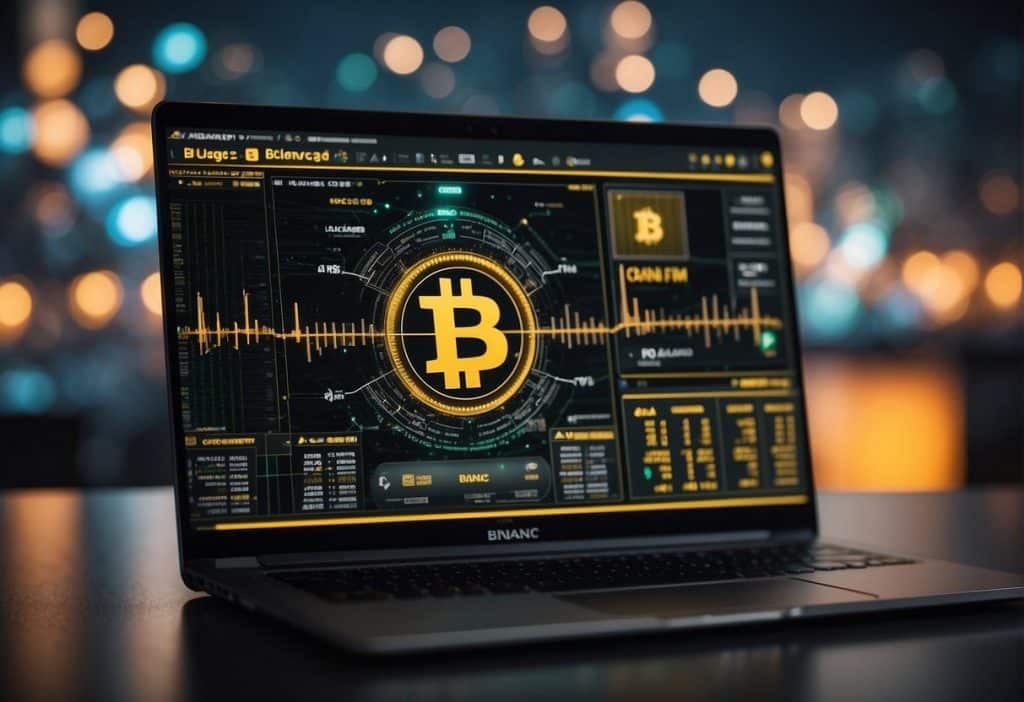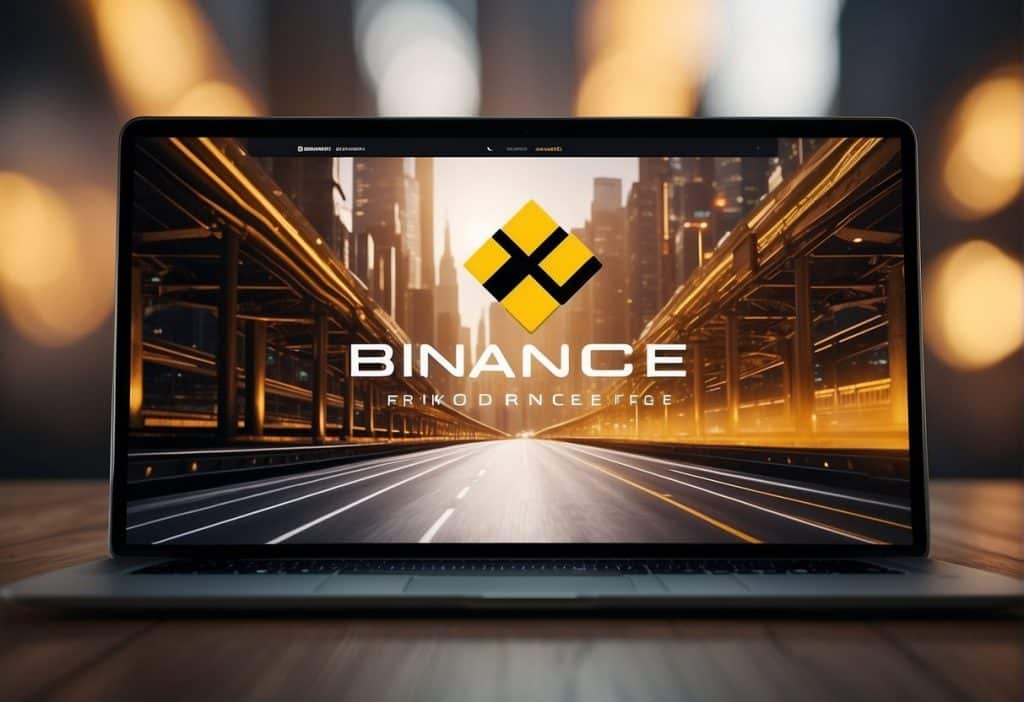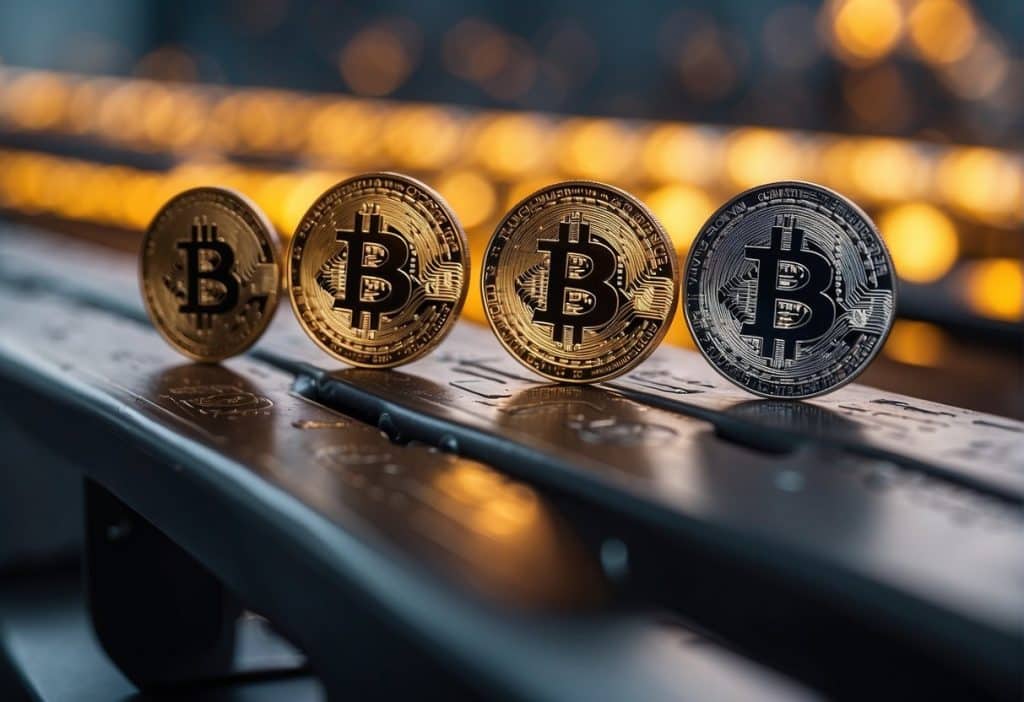In the rapidly evolving world of blockchain technology, interoperability has become a critical concept for users and developers alike. The Binance Bridge serves as a conduit between different blockchain networks, fostering a more interconnected and efficient ecosystem. It enables users to extend the utility of their digital assets across various chains by allowing the conversion of cryptocurrencies into Binance Chain and Binance Smart Chain tokens.

The significance of the Binance Bridge is underscored by its ability to support a wide variety of tokens, including popular ones like Ethereum (ETH), Tether (USDT), and Binance USD (BUSD). This adaptability promotes a seamless experience for users who wish to access decentralized applications (DApps) and participate in decentralized finance (DeFi) across chains. Understanding how to use the Binance Bridge can open up a world of possibilities in the blockchain space, from engaging with DeFi services to exploring new blockchain games and the metaverse.
Key Takeaways
- Binance Bridge facilitates the exchange of tokens across distinct blockchain networks, enhancing their interoperability.
- Users can engage with DApps and DeFi across different ecosystems through the bridge.
- Utilizing Binance Bridge contributes to a seamless cross-chain transaction experience.
NOT YET A BINANCE USER?
Join today with the Binance Referral Code for exclusive benefits or read our Binance Review to learn why Binance is the right exchange for you!
GET UP TO 50% OFF TRADING FEES WITH THE CODE “WUPBLUYN”
Understanding Binance Bridge

Binance Bridge serves as a key infrastructure, linking different blockchains and supporting asset transfers and interoperability within the Binance ecosystem.
Definition and Purpose of Binance Bridge
The Binance Bridge is a protocol designed to facilitate liquidity transfers between the Binance Chain and various blockchain networks. Its core purpose is to enable the seamless exchange of assets, such as cryptocurrencies and tokens, across independent blockchains in a decentralized manner. This means you can convert tokens like BUSD, USDT, and ETH into Binance Chain compatible wrapped tokens, thereby contributing to the larger Binance Chain ecosystem without the control of a central authority.
Evolution to Binance Bridge 2.0
Binance Bridge 2.0 represents an advancement in the interoperability of blockchain networks. This update allows for the bridging of not only listed tokens but also selected unlisted tokens from Ethereum to the BNB Smart Chain as BTokens. With this enhancement, you have increased flexibility and opportunities to utilize your wrapped tokens within the BNB Chain ecosystem. It extends support for Decentralized Finance (DeFi), blockchain games, and other applications, reaffirming its commitment to providing low fees and fast transactions.
Key Features of Binance Bridge

The Binance Bridge serves as a pivotal tool for your engagement in the ever-expanding universe of decentralized applications (DApps). It offers a secure and versatile means to transfer assets across numerous blockchains, enhancing interoperability and providing a seamless user experience in the process.
Interoperability and Supported Networks
The interoperability of Binance Bridge extends across a variety of blockchain environments. You can effortlessly convert selected coins into their wrapped equivalents, allowing for their utilization on Binance Chain or BNB Smart Chain. This is essential for participating in different ecosystems and accessing a broader range of decentralized services.
- Supported Networks: Binance Chain, BNB Smart Chain
- Interconnectivity: Facilitates cross-chain transfers
Token Swap Mechanism
Your interactions with Binance Bridge involve token swaps, which are pivotal for operating within the Binance ecosystem. You can swap assets such as BUSD, USDT, and ETH into wrapped tokens, also known as BTokens. These swaps extend your capabilities in DeFi, blockchain games, and other DApps, empowering you with more control over your digital assets.
- Swaps: Asset conversions to BTokens
- Accessibility: Simplifying access to Binance Chain services
Infrastructure and Security
Binance Bridge’s infrastructure is designed with a focus on decentralization and security, ensuring the integrity and safety of your transactions. With every swap or transfer, you benefit from the robust security measures that are an integral part of the platform.
- Infrastructure: Advanced and reliable, enabling efficient asset transfers
- Security: Top-tier protective measures safeguarding your assets
By using Binance Bridge, you’ll experience a streamlined process for moving assets between different chains, bolstered by high-grade security – a combination that confidently positions you at the frontier of blockchain interoperability.
Using Binance Bridge

Using the Binance Bridge, you can facilitate the interchange of digital assets between different blockchains with ease. This functionality is particularly helpful if you want to transfer assets such as Ethereum tokens to the Binance Smart Chain.
Connecting A Wallet
To begin using Binance Bridge, connect your digital wallet to the service. This is a critical first step in executing any transactions or swaps on the platform. You can use various wallets, such as Metamask, which is a widely used choice due to its simplicity and robust security features, encapsulating your private keys in a secure environment.
- Navigate to the Binance Bridge website.
- Click on the “Connect Wallet” button.
- Select your wallet provider (e.g., Metamask).
- Follow the prompts to grant Binance Bridge access to your wallet.
Be sure that your wallet has a balance of Ethereum or other supported assets you wish to swap, as well as some ETH to pay for transaction fees.
Executing Swaps and Transactions
After connecting your wallet, you’re ready to execute swaps and transactions. Swapping refers to exchanging one type of digital asset for another—such as ETH to Binance-Pegged Ethereum (BETH) tokens—while maintaining the equivalent value.
- Choose the asset you want to swap.
- Enter the amount for the transaction.
- Confirm the details associated with the swap, including the receiving blockchain (often Binance Smart Chain) and the expected transaction fees.
The bridge will indicate the estimated time for the transaction to complete, which may vary based on network congestion and transaction complexity. Always double-check transaction details before confirming to prevent mistakes and ensure the swap meets your expectations.
Binance Smart Chain Ecosystem

The Binance Smart Chain ecosystem encompasses a robust network supporting smart contracts and decentralized applications (DApps), bolstered by the native BNB Chain for liquidity and trading.
Smart Contracts and DApps
Within the ecosystem, you can engage with smart contracts that are self-executing contracts with the terms directly written into code. This facilitates a vast array of DApps across various sectors, from finance to gaming. Vital to this infrastructure is the Ethereum Virtual Machine (EVM) compatibility, which enables developers to port projects from Ethereum with relative ease.
BNB Chain
Formerly known as Binance Smart Chain (BSC), the BNB Chain is designed to run in parallel with the original Binance Chain. It introduces the flexibility of smart contracts while retaining the high performance of the Binance Chain. BNB, initially intended as a utility token for fee discounts on the Binance exchange, now fuels transactions on the BNB Chain as well.
Liquidity and Trading
Liquidity in the Binance Smart Chain ecosystem is driven by decentralized exchanges (DEXs) like PancakeSwap, where you can trade a myriad of assets without the need for an intermediary. These platforms support trading pairs with various assets, including stablecoins like BUSD and USDT, enhancing the liquidity of the BNB Chain. Trading on these DEXs occurs directly from your wallet, providing a secure and private means to trade assets.
Token Types and Interoperability

In the context of Binance Bridge, interoperability is achieved through the use of wrapped and pegged tokens, facilitated by the ERC-20 and BEP-20 token standards. These mechanisms ensure that you can seamlessly move your assets between different blockchain networks.
Wrapped Tokens and Pegged Assets
Wrapped Tokens act as digital versions of a corresponding asset, which are held in a reserve by smart contracts. When you use your assets such as Bitcoin or Ethereum on the Binance Bridge, they are transformed into Btokens. These Bep20 Btokens function within the BNB Smart Chain, possessing the same value as your original tokens, enabling you to interact with decentralized applications (dApps) on this platform.
- Pegged Tokens ensure value consistency with the original asset. For example, one wrapped BTC on Binance Smart Chain (BSC) equals one BTC in value.
Btokens are an embodiment of this concept, allowing you to bridge listed and selected unlisted tokens from Ethereum to BNB Smart Chain and vice versa, maintaining their worth across both ecosystems.
ERC-20 and BEP-20 Token Standards
The ERC-20 Token standard is a widespread prototype for creating tokens on the Ethereum blockchain. This standard includes a set of rules that all Ethereum-based tokens must follow, making them predictable and ensuring that they can work with various services within the Ethereum ecosystem.
- ERC20 Tokens are compatible with any platform that accepts the ERC-20 standard.
The BEP-20 Token standard serves a similar function for the Binance Smart Chain. It is compatible with both ERC-20 Tokens and Binance’s native tokens, thereby ensuring that if you have Bep-20 Tokens, you’re able to use them across a broad range of dApps and platforms within the BSC network.
- For cross-chain functionality, BEP-20 Tokens are essential as Bep20 Btokens when porting assets to the Binance ecosystem. This ensures that no matter the origin of your asset, its utility remains within the BSC domain.
The interplay between these token types through the Binance Bridge exhibits the bridge’s role as a crucial tool for interoperability within the crypto economy, simplifying the process for users like you to maximize their digital assets’ utility across various networks.
Cross-Chain Transactions

Cross-chain transactions facilitate the transfer of assets and information between two distinct blockchain networks, such as ETH and BNB. By leveraging cross-chain bridges, you enhance interoperability and access decentralized finance (DeFi) ecosystems more fluidly.
Mechanics of Cross-Chain Bridging
When you engage in a cross-chain transaction, you participate in a process that locks assets on one blockchain and then mints a corresponding asset on another blockchain. Cross-chain bridges use a variety of mechanisms to ensure the security and veracity of these transactions. Here is an overview of the steps you’ll typically encounter:
- Asset Locking: Your original assets, like ETH, are locked in a smart contract on the Ethereum blockchain.
- Asset Minting: An equivalent asset, often known as a ‘wrapped’ version, is minted on the BNB Smart Chain, such as BTokens.
- Transaction Times: These transactions may vary in time; some are near-instantaneous, while others may depend on network congestion.
Inter-Blockchain Liquidity
Inter-blockchain liquidity is a critical facet that allows for seamless transactions between blockchains:
- Liquidity Pools: You can often find liquidity pools on the receiving blockchain, ensuring there are enough assets to cover the transactions.
- Network Fee: You incur network fees, which are essential to consider as they can vary, particularly during periods of high demand on the network.
By understanding the mechanics of cross-chain bridging and the role of inter-blockchain liquidity, you can navigate the exchange of assets between blockchain networks more effectively.
Participating in DeFi

Binance Bridge 2.0 has significantly streamlined the process of participating in decentralized finance (DeFi) through its ability to interconnect different blockchains. This integration facilitates various DeFi activities, including staking, yield farming, and engagement within decentralized autonomous organizations (DAOs).
Staking and Yield Farming
When you stake your cryptocurrencies on a DeFi platform, you lock your funds to support the network’s operation. In return, you receive rewards, often derived from transaction fees or other incentives. Yield farming is a more complex strategy where you lend or stake your assets in DeFi protocols like PancakeSwap to earn returns. Here’s a brief overview of how to engage in staking and yield farming through Binance Bridge:
- Swapping Tokens: Using Binance Bridge, you can swap your ERC-20 tokens to BEP-20 tokens. Original Token (ERC-20) Swapped Token (BEP-20) ETH ETH on Binance Chain USDT USDT on Binance Chain
- Participating in Pools: After swapping, your BEP-20 tokens can be used to participate in liquidity pools on DeFi platforms.
- Staking: Lock your assets in a smart contract to become a validator or to support them, potentially earning you additional tokens for your contribution.
- Yield Farming: Deposit your assets into a DeFi protocol to earn yield, taking advantage of different strategies and pools offered by the platform.
Decentralized Autonomous Organizations (DAOs)
DAOs are entities that operate transparently and are governed by their members, all facilitated by smart contracts. By engaging in a DAO, you can take part in the decision-making process for that particular DeFi protocol. Validators and token holders often have governance rights, allowing them to propose, vote, and implement changes to the protocol. Participating in DAOs provides you with the opportunity to shape the future of DeFi services and protocols. As a member of a DAO, your responsibilities may include:
- Voting: Exercise your right to vote on proposals that may affect the protocol.
- Proposals: Submit your own suggestions to improve the platform.
- Governance Token: Acquire the platform’s governance token to gain voting power.
By using Binance Bridge, you facilitate interoperability between decentralized exchanges (DEXs) and become an integral part of the burgeoning DeFi ecosystem, leveraging its tools for staking, yield farming, and governance.
Security and Self-Custody

Securing your assets on Binance Bridge involves managing your private keys effectively and understanding the role of self-custody wallets.
Managing Private Keys
Your private keys are the critical piece of information that prove ownership of your digital assets. When you use Binance Bridge, it’s pivotal to handle your private keys with the utmost security. Trust Wallet, Binance’s official self-custody wallet, provides a secure environment where your keys are stored locally on your device, not on a centralized exchange. This means you have full control over your funds in the Metaverse and across various blockchains. Remember:
- Never share your private keys with anyone.
- Make regular backups of your keys and store them in multiple secure locations.
Self-Custody Wallets
A Self-Custody Wallet (SCW), such as Trust Wallet, empowers you with direct management of your funds. With SCW, Binance Bridge 2.0 ensures your listed tokens are reachable in your Funding or Spot Wallet, while unlisted tokens reside securely within the SCW. The security of an SCW is paramount, as highlighted by Binance’s strict security measures. Here’s what to consider:
- Review security features: Look for wallets that offer added layers of protection, like multi-factor authentication.
- Understand the recovery process: Familiarize yourself with the process to recover your SCW in case you change or lose your device.
Leveraging these tools and information will help you safely navigate the Binance Bridge, offering a trustworthy route to explore DeFi, blockchain games, and the ever-growing metaverse.
Advanced Concepts in Binance Bridge

The Binance Bridge represents an innovative solution merging the benefits of different blockchain assets and utilities. In this section, you will gain insights into how Binance Bridge intertwines with scaling solutions, expands the playground for blockchain games and NFTs, and enhances funding and financial services in the crypto space.
Scaling Solutions and Layer 2
The implementation of Layer 2 protocols like Polygon provides a viable scaling solution that reduces congestion and lowers transaction costs on the Binance Bridge. By leveraging Layer 2, your transactions circumvent the main blockchain, offering faster processing times. This is particularly significant for ERC20 tokens, which can now move between blockchains more efficiently.
- Key Components:
- Comp: Automated compatibility and conversion processes for ERC20 tokens.
- Validators: High credibility node operators ensure secure and trustworthy transactions.
Blockchain Games and NFTs
Binance Bridge has opened a gateway for NFTs and blockchain games, driving growth in these sectors. This bridge supports the smooth transfer of gaming assets and NFTs, allowing for a more engaging experience. Your in-game assets can now be easily bridged from Binance Chain to other compatible networks, facilitating a cohesive ecosystem.
- Features:
- Seamless bridging of in-game assets and tokens.
- Strong integration with blockchain gaming platforms for a unified user experience.
Funding and Financial Services
The integration of Binance Bridge into financial services provides robust funding mechanisms for your endeavors. With a funding wallet and spot wallet at your disposal, you can manage your financial activities with greater flexibility. Additionally, Binance Bridge promotes liquidity and accessibility of assets, enhancing the overall attractiveness and reliability of Binance Chain in the market.
- Financial Tools:
- Funding Wallet: Efficiently manage your cross-chain assets and bridge transfers.
- Spot Wallet: Immediate access to your assets for rapid trade execution on Binance platforms.
Each aspect here, from Layer 2 solutions to NFT marketplaces, forms the foundation of Binance Bridge’s advanced contributions towards a more interconnected and streamlined future for blockchain technology.
Frequently Asked Questions
If you’re looking to use Binance Bridge, you likely have some questions about its operation. This section aims to address common inquiries and provide you with clear, straightforward answers.
How to use Binance Bridge with Trust Wallet?
To use Binance Bridge with Trust Wallet, first ensure that your Trust Wallet is compatible with Binance Smart Chain. Then, access Binance Bridge and select the assets you wish to bridge. Connect your Trust Wallet to the service, and follow the instructions to complete the transaction.
What are the steps to connect MetaMask to Binance Bridge?
Connecting MetaMask to Binance Bridge involves selecting MetaMask as your wallet of choice on the Binance Bridge interface. Ensure MetaMask is configured for the correct network, then connect and approve the connection to bind your MetaMask wallet to the bridge.
Are there any fees associated with using Binance Bridge?
Yes, there are fees when using Binance Bridge. These fees are dynamic and can vary based on the network congestion and the asset being bridged. Always verify the current fee schedule on the Binance Bridge platform before initiating a transaction.
What is the process for bridging from BSC to ETH?
Bridging from Binance Smart Chain (BSC) to Ethereum (ETH) requires you to select the specific assets you want to bridge on the Binance Bridge service. Follow the platform’s instructions for initiating the transfer which will typically involve confirming the transaction on your blockchain wallet and waiting for the process to complete.
How can I download and use the Binance Bridge app?
To use the Binance Bridge app, you would typically need to look for it in the app store compatible with your device or through the official Binance website. However, as of the knowledge cutoff date, a standalone Binance Bridge app may not be available. Instead, access to Binance Bridge services is typically via a web interface.
How secure is using Binance Bridge for transactions?
Binance Bridge employs security measures to protect your transactions. It’s essential to follow best practices such as ensuring you’re on the legitimate Binance Bridge website, using a secure internet connection, and verifying all transaction details before confirmation.
